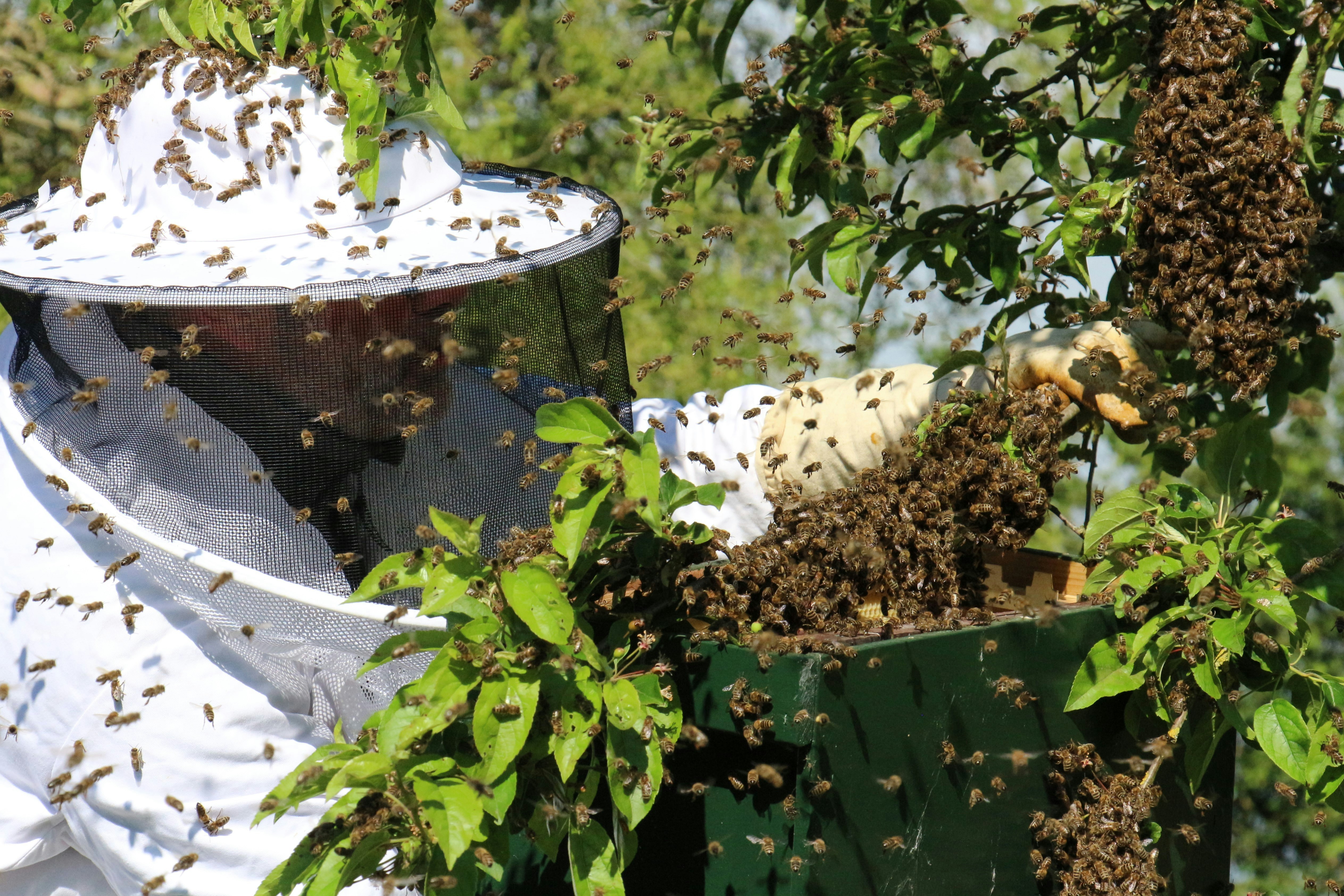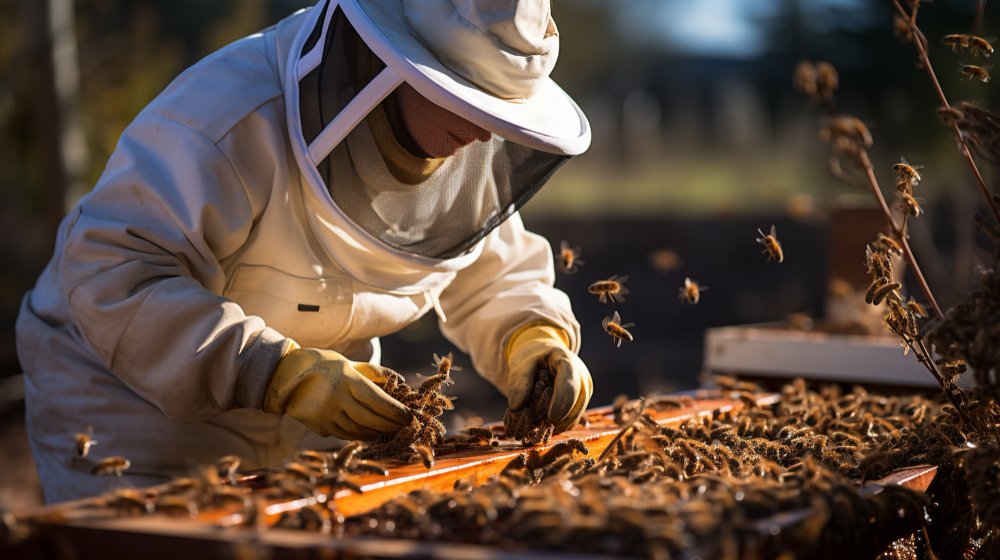Introduction to Bee Infestation
Bees are vital to our ecosystem, but when they decide to set up shop in your attic, wall, or backyard, they become less of a blessing and more of a buzzing problem. Bee Infestations aren’t just inconvenient—they can be dangerous if not handled properly.

What is a Bee Infestation?
A bee infestation occurs when a large number of bees occupy a specific area, often leading to potential hazards for property owners. These infestations usually arise in residential spaces, such as attics, walls, or other concealed locations, thus making them difficult to detect until they have become a substantial problem.
Signs of Bee Infestation
Recognizing the signs of a bee infestation is crucial for timely intervention. Homeowners should look for increased bee activity, unusual buzzing sounds, or even the appearance of bees entering and exiting specific entry points. Additionally, the presence of honeycomb or bee droppings may signal an infestation that requires immediate attention.
Risks and Solutions
Bee infestations pose various risks, particularly for individuals allergic to bee stings. Beyond personal safety, an infestation can also result in structural damage to the property. To manage this issue, it is essential to seek professional pest control services. These experts can safely remove the bees and advise on preventative measures to avoid future infestations. Moreover, understanding the importance of bees in our ecosystem can also encourage humane solutions, such as relocation rather than extermination.
Why Bee Infestations Happen
Bees are on a constant hunt for shelter—warm, dry, and hidden spots are ideal. That’s why homes, especially areas like eaves, chimneys, and wall cavities, make perfect nesting sites. Spring and early summer are peak infestation times.
Common Places Bees Nest in Homes
- Attics
- Wall voids
- Sheds
- Chimneys
- Roof overhangs
Why You Shouldn’t Ignore a Bee Infestation
Potential Health Risks
Bees usually mind their business, but they will sting when provoked. For people with allergies, a sting can lead to severe reactions, even life-threatening anaphylaxis.
Structural Damage Concerns
Beyond health, a long-term hive can wreak havoc on your home. Honey can seep into walls, attracting ants, mold, and even rodents.
The Difference Between Bees and Wasps
Identification Tips
Bees are fuzzy and round, while wasps have slimmer, shinier bodies. Bees are usually golden-yellow with black stripes, whereas wasps are brighter and more aggressive.
Behavior Comparison
Bees are pollinators and typically non-aggressive unless threatened. Wasps, on the other hand, can sting multiple times and are naturally territorial.
Safe Bee Removal Services
Importance of Humane Removal
Not all bees should be exterminated—especially honey bees, which are essential to pollination. That’s why eco-friendly bee removal options focus on relocation rather than destruction.
Remove Bees without Killing
Professional bee-friendly pest solutions use techniques like vacuum extraction or box trapping to collect bees and transfer them to safe environments.
Professional Bee Control Explained
Why Hire Experts
Bee removal isn’t a DIY task. Trained professionals know how to handle bees safely, protect the hive (if needed), and prevent return infestations.
Beekeeper Pest Control Services
Some removal companies work directly with licensed beekeepers to relocate colonies to local farms or conservation areas.
Types of Bee Removal Services
Residential Bee Control
Most common among homeowners, these services include inspections, nest removals, and preventive treatments.
Commercial Bee Removal
Warehouses, restaurants, and office buildings are also prone to infestations. Specialized teams handle these with minimal disruption to business.
Emergency Bee Removal
If you find a swarm or an aggressive hive suddenly appearing, many services offer 24/7 emergency assistance.
Eco-Friendly Bee Removal Techniques
Natural Bee Deterrents
- Planting mint or citronella
- Sprinkling cinnamon
- Using vinegar sprays around entry points
These are great for mild issues or keeping bees away after removal.
Bee-Friendly Pest Solutions
Instead of harsh chemicals, pros use thermal imaging, bee vacuums, and gentle smoke to calm and collect bees safely.
Bee Nest and Beehive Removal
How It’s Done
Once the bees are calm, experts will carefully remove the hive, ensuring that the queen is captured. Then they clean up honey, wax, and residue to prevent re-infestation.
Risks of DIY Beehive Removal
Without the right gear or knowledge, you could get badly stung—or worse, miss part of the hive and have the bees return.
Bee Swarm Removal
What to Do When You See a Swarm
Step away—don’t panic. Swarming bees aren’t usually aggressive; they’re just looking for a new home. But you still need to act fast.
When to Call an Expert
The moment you spot a swarm hanging from a tree, roof, or fence, call a bee swarm removal expert before they settle in.
Preventing Future Infestations
Bee Proofing Your Home
- Seal cracks and holes
- Install fine mesh over vents
- Trim overgrown trees and bushes
Long-Term Prevention Tips
Regular inspections and using natural bee deterrents can help maintain a bee-free home.
Choosing the Right Bee Control Company
What to Look for in a Service Provider
- Licensed and insured
- Experience with eco-friendly bee removal
- Positive reviews and testimonials
Questions to Ask Before Hiring
- Do you relocate or exterminate bees?
- Are your methods safe for pets?
- Is cleanup included?
Cost of Bee Removal Services
Factors That Affect Price
- Hive location (attic vs outside wall)
- Hive size
- Type of bee
- Urgency of the situation
Is It Covered by Insurance?
Sometimes, yes—especially if it causes structural damage. Always check with your provider.
Legal and Environmental Considerations
Are Bees Protected?
Yes, in many places. Especially honey bees. That’s why extermination is usually a last resort and requires permission.
Local Laws About Bee Removal
Some cities require certified beekeepers to handle infestations—check your local regulations before acting.
Real-Life Stories and Case Studies
Success Stories from Bee Removal Experts
“We removed a 40-pound hive from behind a chimney without harming a single bee. The colony is now thriving on a nearby farm!”
Lessons Learned from Failed DIY Attempts
“I tried spraying them with bug spray. Not only did it fail, but I got stung five times and still had to call the pros.”
Conclusion
Bee infestations are serious, but they don’t have to be scary. With the right help, you can handle the problem humanely, safely, and permanently. Whether it’s a hidden hive in your wall or a buzzing swarm in your yard, professional Bee Infestation Removal is always the smartest move.
FAQs
Can I remove bees myself?
Technically, yes—but it’s risky. Without proper tools and knowledge, you could be stung or make the infestation worse.
Are honey bees dangerous?
Not usually. Honey bees are docile unless threatened, but their stings can be dangerous to allergic individuals.
How much does professional bee removal cost?
It can range from $150 to $500 depending on the complexity and location of the hive.
Is bee removal safe for kids and pets?
Yes, especially when done professionally using non-toxic methods.
Do bees come back after removal?
Not if the area is cleaned thoroughly and bee-proofing steps are followed.




